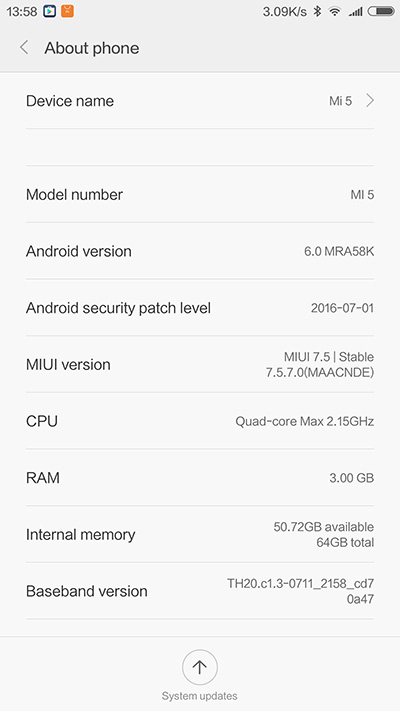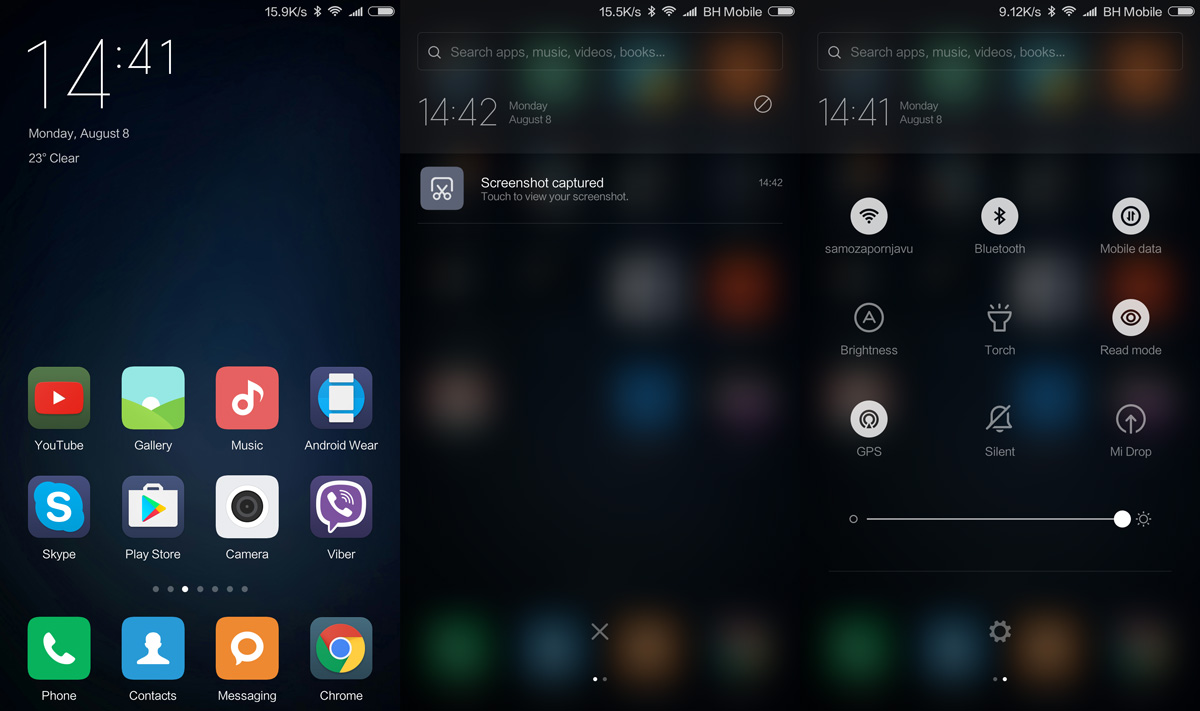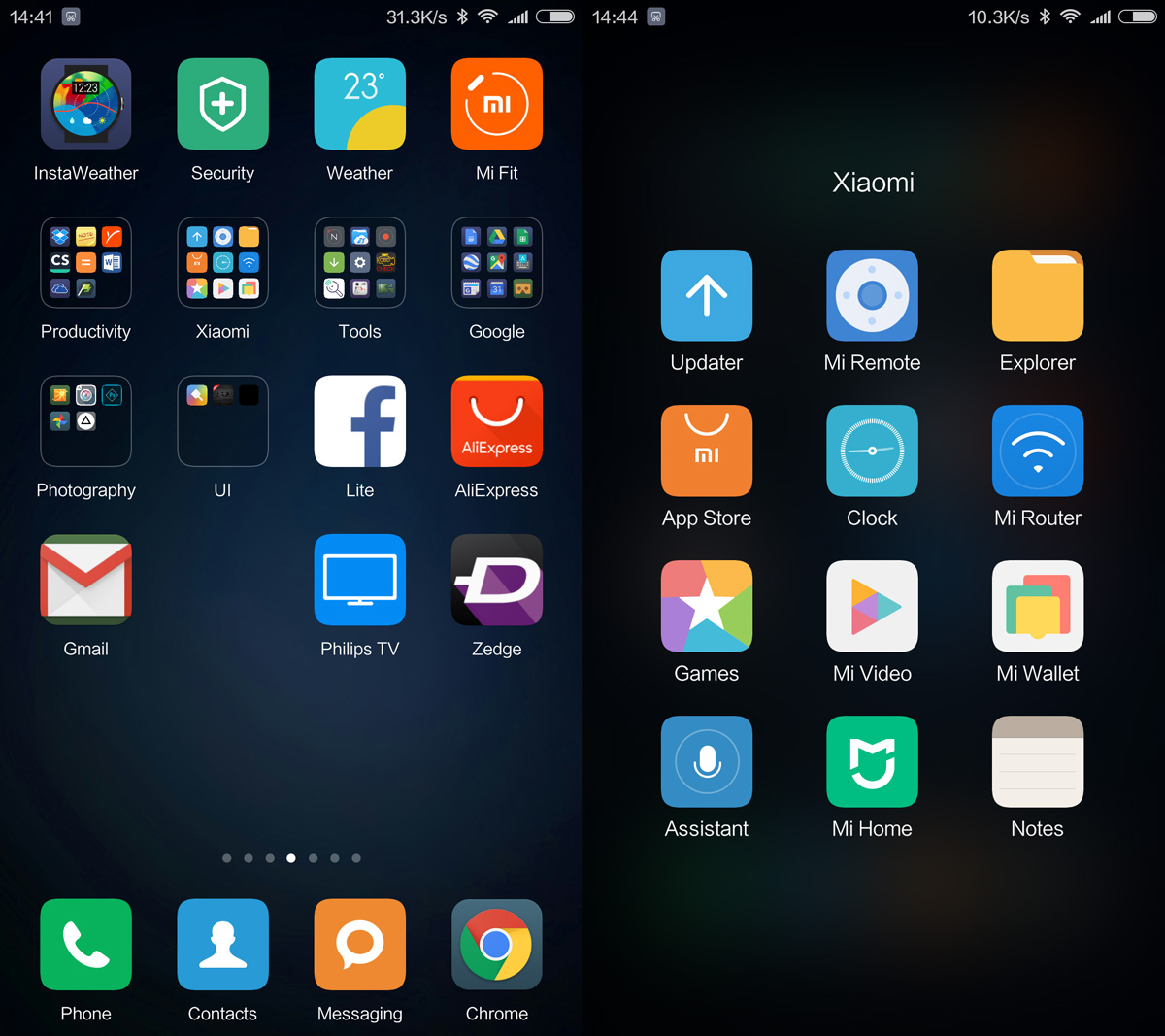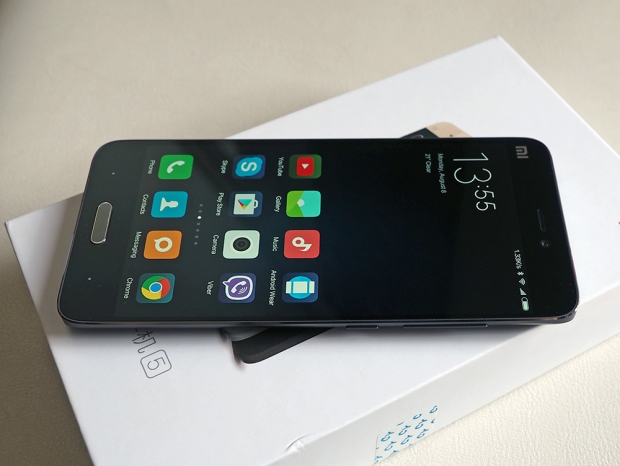Index
OS, UI and Everyday Use
The Mi5 is the first Xiaomi phone to ship with Android 6.0. In fact, the company hasn’t updated the rest of its portfolio to Android 6.0 just yet. We currently have two Xiaomi samples lying around our lab (Mi4c and Redmi Note 3 Pro), and neither of them received an Android 6.0 update yet.
However, in the weird world of Xiaomi, Android versions are a bit less relevant than you may think. The company’s elaborate MIUI skin makes the difference between Android 5.1 and 6.0 barely noticeable as far as overall user experience goes.

Of course, there are a lot of differences that aren’t skin deep, but realistically, most users would be unable to tell the difference.
Android 6.0 should unlock a few extra features and improve performance in certain situations, but to be honest, it’s not a huge deal.

For most users, the MIUI version will be a much bigger deal that the version of Android buried beneath it. We have a love-hate relationship with MIUI, in that it’s gorgeous, customisable and flexible, but at the same time it’s a bit too similar to iOS and new users might have a hard time adjusting to Xiaomi’s UI. What’s more, a lot of services are China-specific, so Western users can’t access them. There are a few annoying aspects of MIUI, such as the inability to expand email notifications or delete emails from the notification drop-down, but these foibles are outweighed by MIUIs look and feel.
MIUI 8 is just around the corner, and the Mi5 will get it first. The new incarnation of MIUI promises to deliver a few new features, including an improved app manager, new core apps, the ability to change the background colour in system apps, new power saving mode, overhauled gallery and a new video editor.

The MIUI user interface hasn’t changed, which means it’s pretty much a hybrid of iOS and Android. It’s one of the best-looking UIs you can get on Android today, but it’s not perfect. We’d like to see more available actions on the notification pane, the menu system can confuse new users because some stuff just isn’t where you’d expect it.
Customization remains MIUIs trump card. Thousands of different themes are available, ranging from absurd gimmicks to professionally designed gems. You can also edit and “mix” themes, so you can use the lock screen from one theme, icons from another, and so on.
The biggest problem with the Mi5’s software isn’t technical, it’s political. Xiaomi decided to lock the bootloader and encrypt the Mi5, which wouldn’t be much of a problem if the company sold its phones in the West. Unfortunately, it does not, so a lot of phones are sourced from resellers and may ship with unofficial ROMs. Many resellers basically take the Chinese ROM, add dozens of languages, and ship the phone worldwide. If you want to move to an official ROM (Chinese or Global), things can be tricky. In the past, Xiaomi phones were flash-friendly and we flashed virtually every Xiaomi phone we reviewed so far - the process would usually take minutes. With the Mi5, you may be forced to contact Xiaomi and apply for a bootloader unlock. Once the request is processed and approved, you should be able to revert to an original ROM, but the process is more complicated and time consuming than it used to be. It also means novice users could be in trouble if they get a phone with a reseller ROM.
Once you’ve got the latest official ROM running, you can proceed to set up services and start enjoying your Mi5. So what’s it like in everyday use?
Pretty good, actually. The low weight, curved sides and thin bezels create an illusion of an even smaller device. The Mi5’s footprint is just a tad bigger than that of the iPhone 6S, yet it’s lighter and has a bigger screen. In fact, the 5-inch Mi4c is a hair thicker and wider than the Mi5, despite the fact that it rocks a smaller display.
Xiaomi’s decision to use a glass back on the Mi5 might not be to everyone’s liking. Yes, having Gorilla Glass 4 on the back should protect the phone from scratches, but glass picks up a lot of fingerprints. While it’s relatively thin, the glass battery cover feels sturdy, although you could be in a world of hurt if you drop the phone. A genuine replacement cover will set you back about $30-$40, and you should have no trouble swapping it out on your own. You can also get third-party covers, which are a tad thicker than the original glass cover. These covers cost a few bucks each, and you can choose all sorts of designs and materials.
It’s clear Xiaomi went out of its way to keep the phone light and compact, so did it sacrifice battery life in the process? Not really. The Mi5 has a 3000mAh battery, which delivers good endurance, on par with other Android flagships, and even better in some respects (thanks to the efficient screen). Quick Charge 3.0 is on board as well, which is great news because the phone can charge to about 80% in under an hour.
We have no complaints about voice call quality and we did not experience any network issues. Support for certain 4G bands is lacking, so you should do your homework prior to making a purchase. The community is already trying to unlock more bands on the Chinese version of the phone, but this is hardly something we’d rely on.

Xiaomi was late to join the fingerprint scanner craze. It’s first phone to feature a fingerprint scanner, the Redmi Note 3, launched earlier this year. The Mi5 is the first Xiaomi handset to feature a fingerprint scanner at the front. The scanner is relatively small and resembles Samsung’s home button. Still, Samsung did sort of rip off Xiaomi Note’s back design, so let’s call it even. The fingerprint scanner is ceramic and the button can be set to go Home after a tap or a press, which is nice because we assume Xiaomi veterans will need some time getting used to it. We just wish Xiaomi would borrow another home button idea from another competitor - Meizu’s home buttons double as the Back and Home button (tap for Back, press button for Home). The fingerprint sensor works like a charm, despite its relatively small size. You can also use it to limit access to certain apps and so on.
If you take the new Home button out of the equation, the Mi5 feels like any Xiaomi phone out there, with one small difference: It’s much faster!
We’re not saying lesser Xiaomi phones are slow, but the Mi5 is in a league of its own. The mighty Snapdragon 820, backed by very fast RAM and storage, delivers exceptional performance, on a par with other Android flagships based on the same processor. However, it costs a lot less than other SD820 phones, which is why people find Xiaomi attractive in the first place - the company has a tradition of delivering good hardware and excellent prices, and the Mi5 is no exception.
Yeah, it’s supposed to be a “budget flagship” but in reality, there’s nothing “budget” about the Mi5. It looks, feels and performs like any big-brand flagship, and, in some respects, it manages to pull ahead of much more expensive phones.




